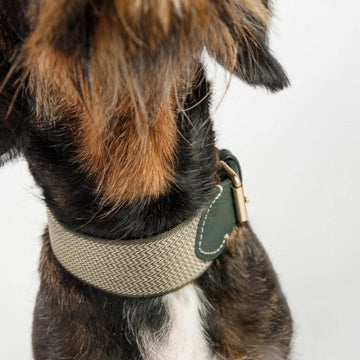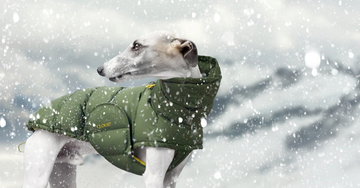Collars come in a variety of shapes, materials and widths – some are better for certain types of fur, others are extra durable and water-resistant. But what are the real advantages of wide collars compared to regular narrow collars?
Collar or harness? How to protect your dog's neck and back
The choice between a collar and a harness depends on your dog's needs, walking style and training.
Do you have a dog that pulls a lot?
Then a harness may be the best choice to avoid strain on the neck and spine. A well-fitted harness distributes pressure across the body and reduces the risk of injury – especially in breeds with long backs, such as dachshunds.
Do you need to train your dog to walk nicely on a leash?
A collar can be an advantage here, as it provides more precise contact and helps you teach your dog to walk without pulling. Many dogs tend to "lay out on the harness" and pull more, making leash training more difficult.
Choose a wide collar for extra support
A wider collar distributes pressure better across more cervical vertebrae, reducing strain on the neck and back. This makes wide collars a good alternative if you prefer to walk with a collar but still want to be gentle on your dog.
Whether you choose a collar or harness, the most important thing is to find a model that suits your dog's size, needs and behavior so that it gets the best comfort and support on the walk.
How thick is a wide necklace?
To distribute the pressure over several cervical vertebrae, a collar should be at least 2 cm wide. For larger dogs, it often requires even more centimeters before it has a real effect.
At Hunni, we have collars from Buddys Dogwear that are around 4 cm wide. This makes them particularly popular among dachshunds and greyhounds, as these breeds have thin necks and – in the case of the dachshund – a delicate back and neck.
At Hunni, some of us use Buddy's Dogwear collars. It's not just about the collar looking really nice, but also about the peace of mind of knowing that the dog's neck is not exposed to unnecessary strain if they suddenly pull.
Are there any dog breeds for which wide collars are not suitable?
The short answer is no – wide collars can in principle be used by all dog breeds. However, there are some situations where a wide collar may not be the most practical choice:
Do you always wear a harness?
If your dog always wears a harness, there is no reason for it to also wear a wide collar. A light and narrow collar for the dog sign is a great alternative. However, there are lightweight but still wide collars if you want both benefits.
Does your dog have easily matted fur?
One disadvantage of wide collars is that they can create knots in the coat as the large surface area slides back and forth. This can be especially a problem for poodles, cottonhounds and other breeds prone to tangled curls.
Does your dog have a wide, short neck?
For dogs with very wide and short necks, such as pugs and French bulldogs, an extra wide collar (4 cm+) can be overwhelming. However, this does not mean that you should avoid wide collars altogether – instead, you can choose a collar 2-3 cm wide, which still distributes the pressure gently.
Below we have collected a selection of collars of 2 cm or more that ensure good pressure distribution without being too large or heavy.





